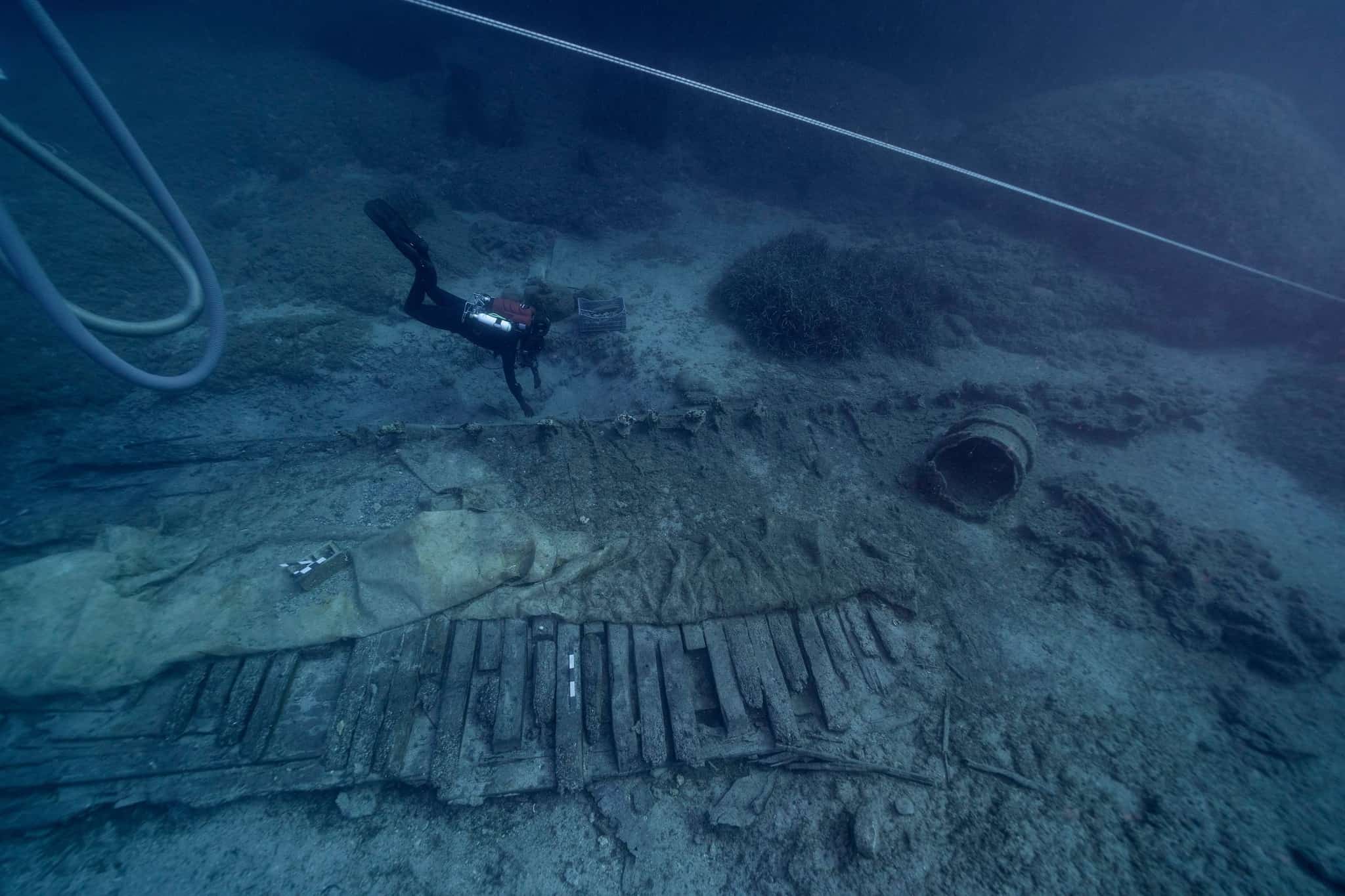
The underwater investigation of the site of the wreck of the Mentor, Lord Elgin’s ill-fated brig which sank off the island of Kythera in September 1802, continues to reveal stunning finds which shed further light into Elgin’s antiquarian ways and his plunder of the Parthenon and its sculptures.
Photos and details of the latest finds from the shipwreck by the Greek Ephorate of Underwater Antiquities, under the direction of archaeologist Dr. Dimitris Kourkoumelis, have just been released as part of the systematic ongoing investigation of the wreck. The underwater team included archaeologists, marine biologists, diving instructors, surveying engineers, antiquities conservationists and seabed technicians.
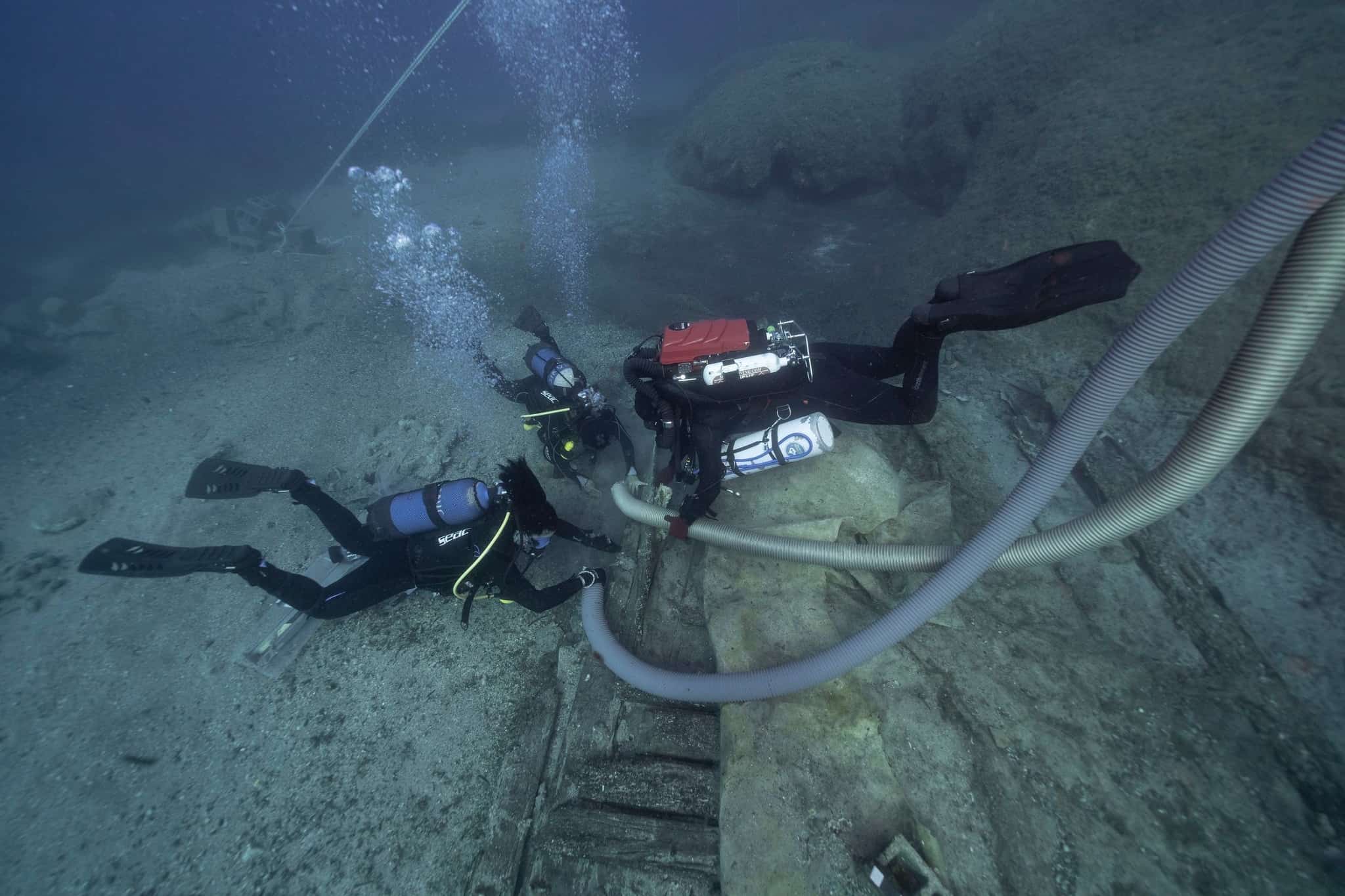
In 1802 Lord Elgin had consigned a large collection of the sculptures, including a number of marble panels from the Parthenon frieze, for transport back to England via Malta but his plans went awry when the twin-masted vessel struck rocks near the entrance to the port of Avlemonas on Cerigo and sank as its crew vainly attempted to find shelter from a raging storm. They cast two anchors which however failed to hold before the Mentor’s prow crashed violently onto the rocks of Agios Nikolaos Bay and sank in approximately 5 fathoms (or approximately 12 metres) of water.
Cerigo was the Venetian name for the island of Kythera. A small castle and armoury built by the Venetians in 1725 and known as the Castelli stood at the entrance to the port: a silent bastion against the many invaders that the island had seen throughout history.
Cerigo was in fact notorious for the treacherous conditions that greeted sailors on their approach, as the poet Waller Rodwell Wright once famously wrote:
“Forsaken isle, around thy barren shore
Wild tempests howl and wintry surges roar.”
Elgin’s private secretary, William Hamilton, who had overseen the loading of the Mentor, was on board when the brig sank and he prepared a sketch of the site of the shipwreck to assist with salvage efforts.
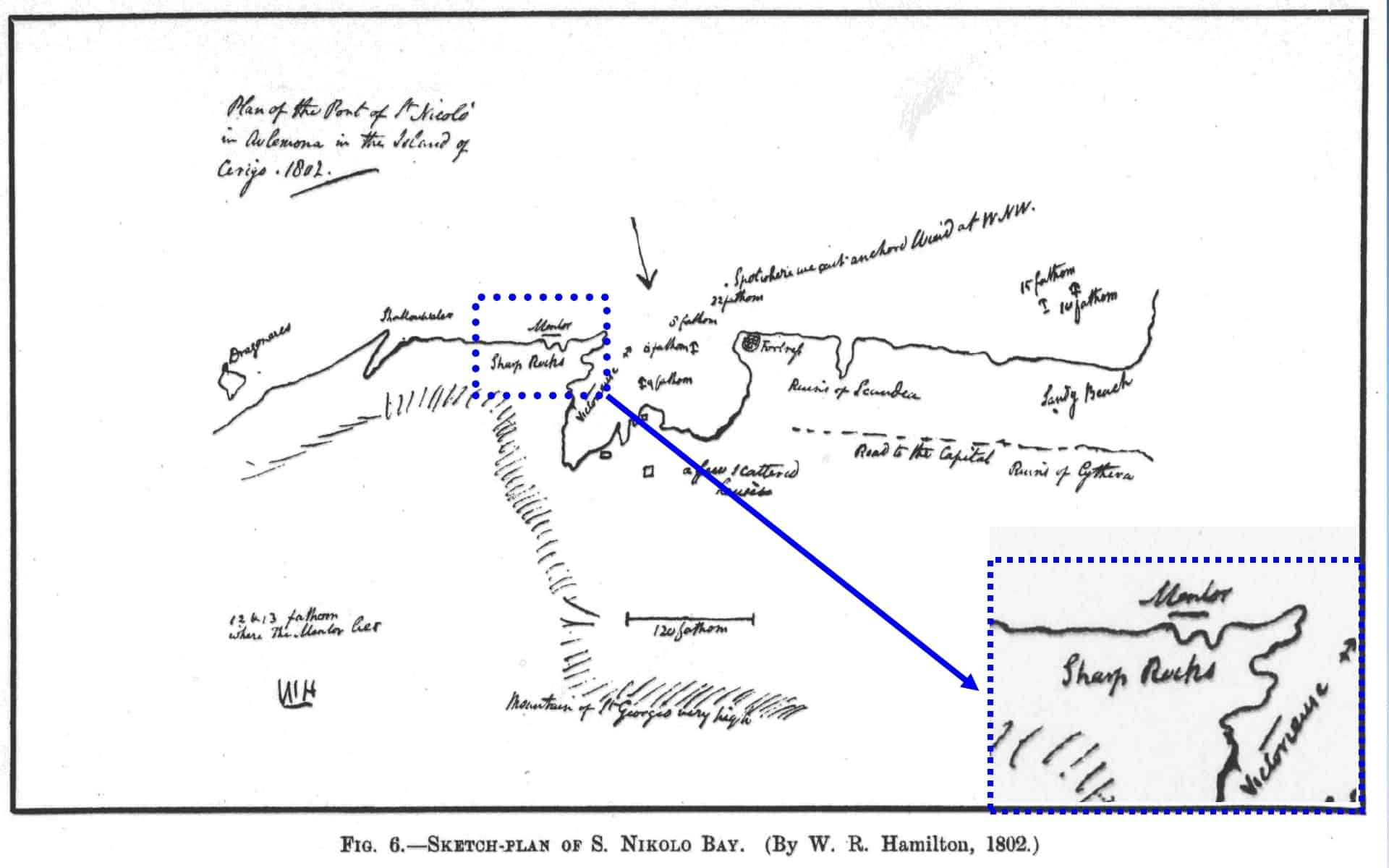

The ship’s master, Captain William Eglen, knew all along that he was carrying a very special cargo as Lord Elgin’s written instructions to him were explicit:
“ I wish you to proceed with all expedition to Athens and there to take on
board all the cases and marbles which Mr Lusieri [an Italian artist
employed by Elgin] can get ready for you.. May I remind that the Mentor
is my brig and it has come from England for my acquisitions. That is its
purpose.”
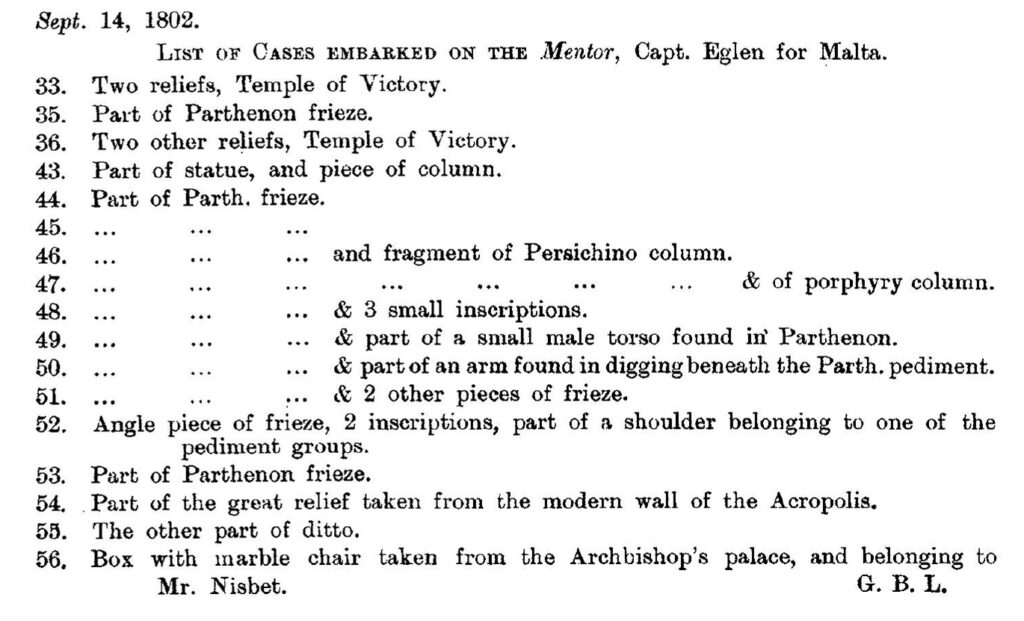
The ship’s manifest was also revealing. The Mentor carried sixteen cases in its hold, containing significant sections of the Parthenon frieze, four pieces of the frieze of the temple of Athena Nike and many other marbles.
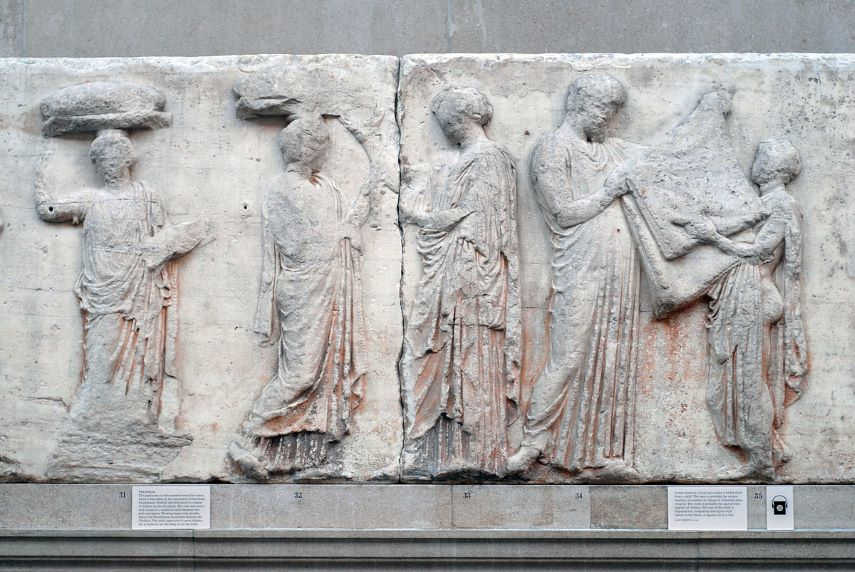
The sinking of the Mentor was greeted with utter dismay in the Elgin camp.
On 25 October 1802 Mary Nisbet, Countess of Elgin, and the wife of the plunderer of the Parthenon Marbles, wrote a letter to her mother:
“Dearest Mother,
Our minds are so occupied with a sad piece of news we have received, we can think and talk of nothing else. Our ship the ‘Mentor’ going from Athens to Malta laden with a quantity of our Athens antiquities …is gone to the bottom, attempting to get into the harbour of Cerigo”
The sense of imperial entitlement was palpable. The looted sculptures were the Elgins’ “Athens antiquities” and their “acquisitions” as the highpoint in Britain’s looting of empire was unfolding.
Lord Egin and his representative, William Hamilton (who was actually on board the Mentor and survived the sinking) immediately set out to ensure that the valuable treasures would be salvaged. He wrote to the British Honorary Vice-Consul on the island, Emmanuel Kaloutsis, seeking his assistance. In his letter, also dated 25 October 1802, Elgin disingenuously stated that his vessel had on board a quantity of boxes “with stones of no value of themselves but of great consequence for me to secure”.
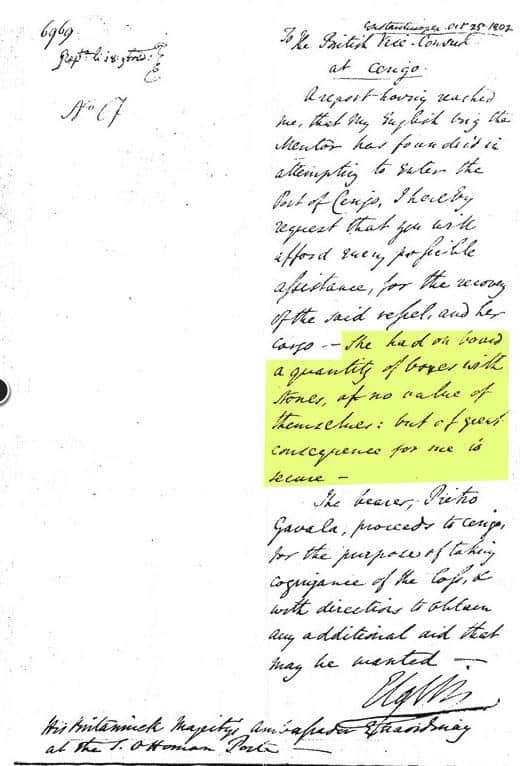
Elgin’s deception knew no bounds although Captain Eglen in a deposition given to the local authorities in the days following the sinking actually described the cargo as “cases of ancient marbles”.
The latest dive at the shipwreck is a culmination of a decade of underwater exploration to investigate the wreck and recover any items of interest that were left behind after its cargo of looted treasures was recovered in 1804 by divers from the island of Kalymnos.
The team had previously concentrated on the stern of the ship and had recovered a number of interesting artefacts, including navigation instruments, hourglass, parts of the ship (including pulleys and nails), as well as pistols, bullets and cannon balls). They also found personal effects of the crew and passengers, including gold and silver coins, watches, belt buckles, pipes and cartridges. The galley of the ship has also yielded dishes, glasses, bottles and glass crystals from a chandelier.
During the latest exploration in 2021, divers made an incision along the keel on the Mentor’s bow in order to study the brig’s construction details. The connection point of the two parts of the keel was located and it was found that the copper sheets that covered it had folded in various places, indicating that the ship after sinking was dragged for a few metres until its port side came to rest on the harbour floor. At this point, between the timber and other wood, parts of the ropes from the ship's rigging and small personal objects were found, including parts of wooden furniture and a gold ring decorated with flowers and dots.

Gold ring
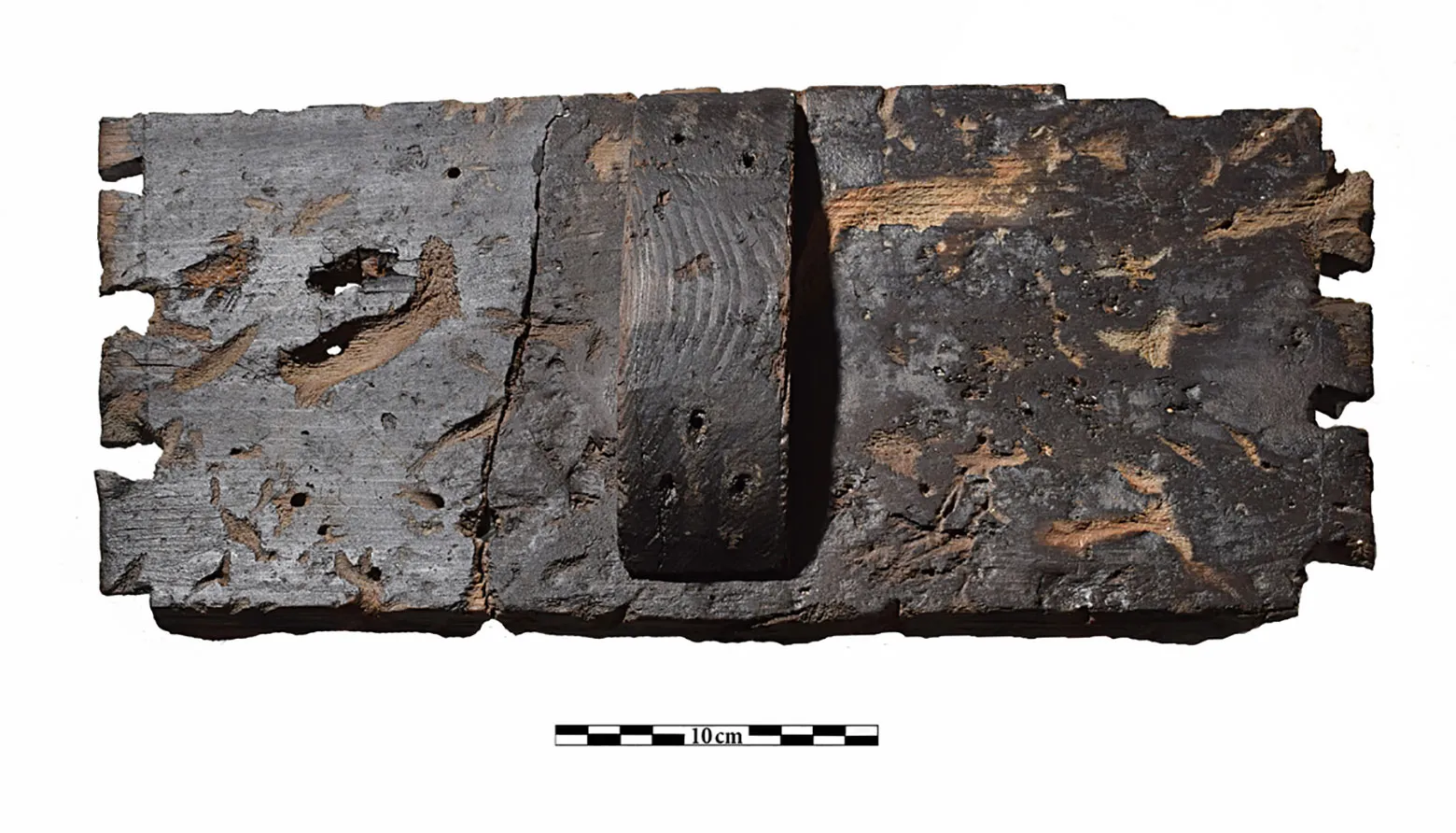
A second incision was made in the aft section of the wreck to enable observations and measurements to be made of the ship’s hull and other structural elements and to look for any objects that would have rolled out of the hull after its sinking. It was found that the hull was preserved in a fairly good condition because of its external protective copper plating. A naval sextant and two Dutch gold coins (or ducats) bearing dates of 1777 and 1800 were found as well as the base of a theodolite outside the hull.

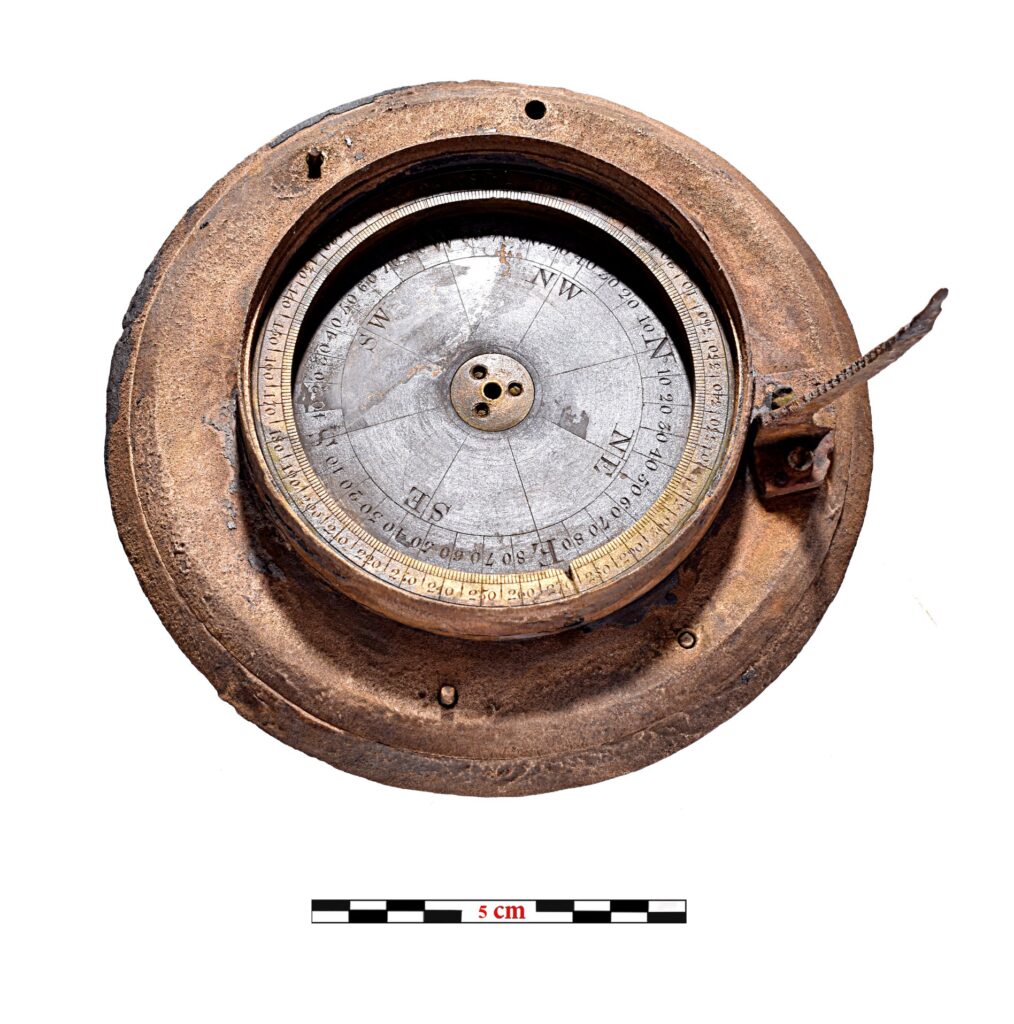
During subsequent maintenance work, it was discovered that part of the topographic instrument could be rebuilt, combining findings from earlier excavation surveys conducted in 2013 and 2015.
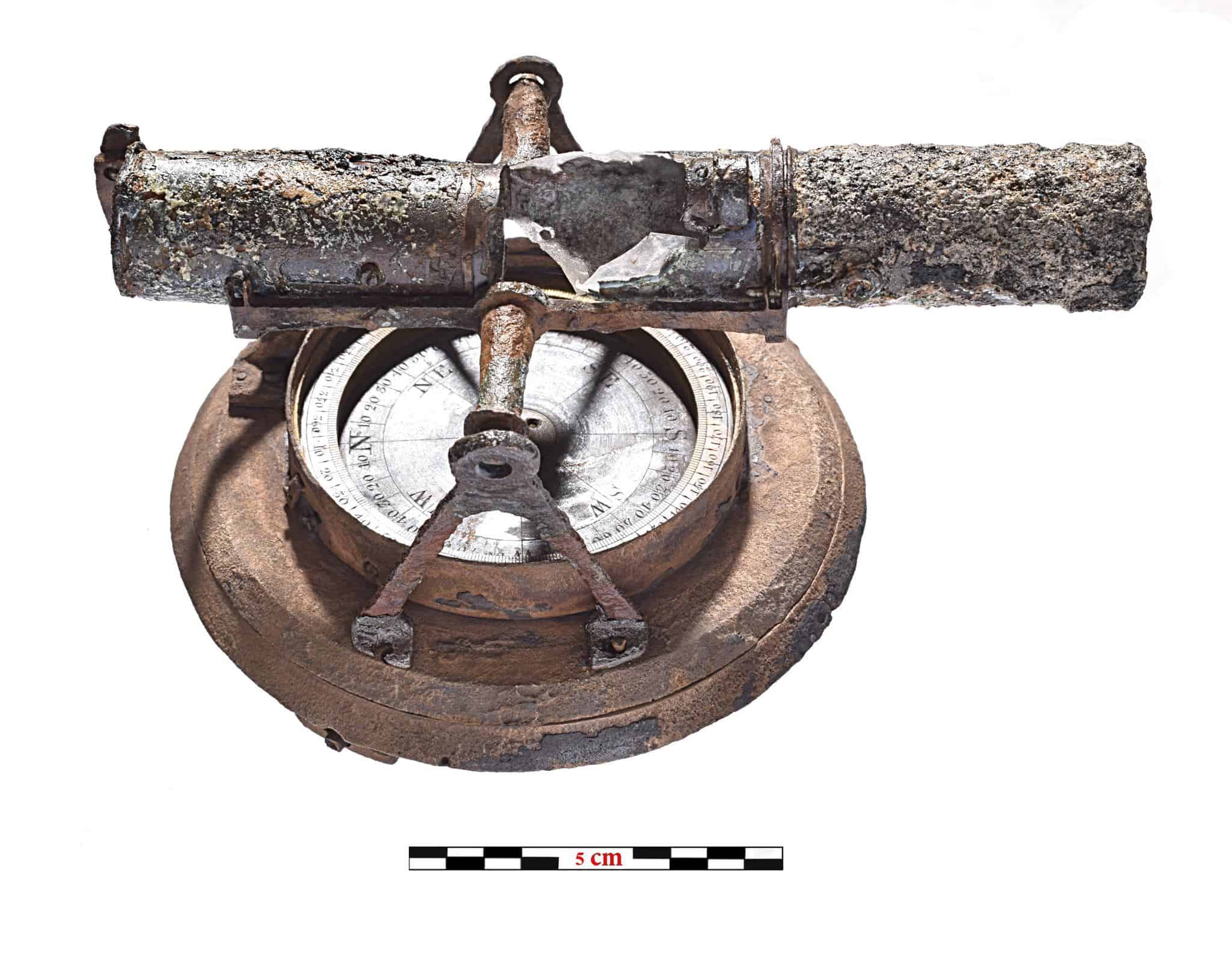
The object assumes special importance as one of the Mentor’s passengers was the well-known topographer, traveller and collector of antiquities, William Martin Leake. The instrument most likely belonged to him and may have been used for the extensive depictions of antiquities that he made in Attica and in surrounding areas.
The findings from the Mentor help us better understand the construction of merchant ships of that period as well as the living conditions of the crews. The survey results are considered particularly interesting and encouraging because the wreck continues to represent one of the worst pages in the history of the Parthenon and its sculptures.
In the end, the Parthenon sculptures made their way to England. But the curse of the Elgin Marbles had not been expunged. Elgin was caught by the French and imprisoned in France. The sculptures languished on the British docks for years until Elgin, by now impoverished, returned to reclaim his imperial booty. In 1816 Elgin succeeded in selling the sculptures to the British Government for £35,000, less than half what it had cost him to plunder the marbles.
The Parthenon Sculptures presently languish in the sterile Duveen Gallery of the British Museum, separated from the Parthenon in Athens and from their natural and historical context, whilst the quest for their return and reunification continues to the present day.
And, meanwhile, in the restless waters off Agios Nikolaos Bay in Kythera, lies what is left of the wreck of the Mentor as testimony to the greed and plunder of Lord Elgin and Empire.
George Vardas is the Co-Vice President of the Australian Parthenon Association and co-founder of the Acropolis Research Group


